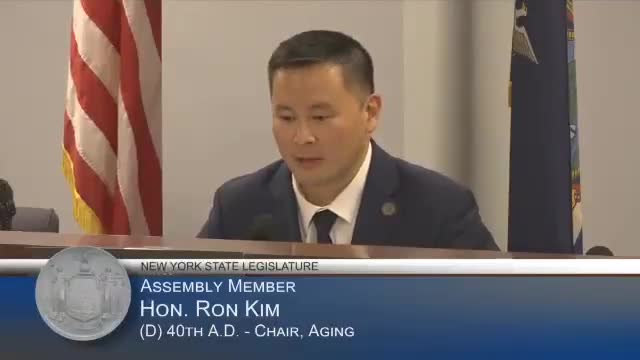California introduces ISEP program to enhance home care funding model
October 17, 2024 | Aging, Standing Committees, House, Legislative, New York
This article was created by AI summarizing key points discussed. AI makes mistakes, so for full details and context, please refer to the video of the full meeting. Please report any errors so we can fix them. Report an error »

In a pivotal assembly meeting held on October 17, 2024, New York State legislators gathered to discuss the Expanded In-Home Services for the Elderly Program (EISEP), a program designed to provide essential support to seniors while keeping them in their homes. The atmosphere was charged with a sense of urgency and purpose as officials highlighted the program's unique approach to home care.
At the heart of the discussion was the innovative payment structure of EISEP, which distinguishes it from traditional Medicaid services. Unlike Medicaid, which requires a physician's note and is often reactive, EISEP operates on a non-medical model that allows for earlier intervention. This proactive approach enables case managers to develop personalized care plans directly with seniors and their families, without the need for medical authorization. This flexibility not only enhances the quality of care but also helps prevent seniors from deteriorating to a point where they require more intensive and costly services.
The funding for EISEP comes from a combination of five different streams, with counties playing a significant role in financing. Local governments negotiate contracts with licensed home care agencies, ensuring that personal care aides are compensated fairly. This model has proven effective, as it treats home care attendants as public servants deserving of respect and adequate pay for their challenging work.
Legislators noted the financial benefits of investing in EISEP, emphasizing that by preventing seniors from needing Medicaid, the state could save hundreds of millions of dollars in future healthcare costs. The program not only supports the elderly but also alleviates the financial burden on the state by reducing the need for more expensive medical interventions.
As the meeting progressed, officials underscored the importance of a comprehensive array of services that EISEP provides, including benefits assistance, transportation, and programs aimed at combating social isolation. These services are crucial in maintaining the independence of seniors and delaying the need for nursing home placements.
The discussions at the assembly highlighted a broader issue facing the nation: the need for a shift from a reactive to a proactive care economy. EISEP stands as a model for how targeted investments in home care can lead to better outcomes for seniors and significant savings for the state. As New York continues to grapple with the challenges of an aging population, the insights shared during this meeting may pave the way for future reforms in elder care.
At the heart of the discussion was the innovative payment structure of EISEP, which distinguishes it from traditional Medicaid services. Unlike Medicaid, which requires a physician's note and is often reactive, EISEP operates on a non-medical model that allows for earlier intervention. This proactive approach enables case managers to develop personalized care plans directly with seniors and their families, without the need for medical authorization. This flexibility not only enhances the quality of care but also helps prevent seniors from deteriorating to a point where they require more intensive and costly services.
The funding for EISEP comes from a combination of five different streams, with counties playing a significant role in financing. Local governments negotiate contracts with licensed home care agencies, ensuring that personal care aides are compensated fairly. This model has proven effective, as it treats home care attendants as public servants deserving of respect and adequate pay for their challenging work.
Legislators noted the financial benefits of investing in EISEP, emphasizing that by preventing seniors from needing Medicaid, the state could save hundreds of millions of dollars in future healthcare costs. The program not only supports the elderly but also alleviates the financial burden on the state by reducing the need for more expensive medical interventions.
As the meeting progressed, officials underscored the importance of a comprehensive array of services that EISEP provides, including benefits assistance, transportation, and programs aimed at combating social isolation. These services are crucial in maintaining the independence of seniors and delaying the need for nursing home placements.
The discussions at the assembly highlighted a broader issue facing the nation: the need for a shift from a reactive to a proactive care economy. EISEP stands as a model for how targeted investments in home care can lead to better outcomes for seniors and significant savings for the state. As New York continues to grapple with the challenges of an aging population, the insights shared during this meeting may pave the way for future reforms in elder care.
View full meeting
This article is based on a recent meeting—watch the full video and explore the complete transcript for deeper insights into the discussion.
View full meeting
